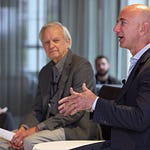Pop Mart Rewriting the Rules of Cute and Outpacing Hello Kitty
In the heart of Beijing, 2010, a small store opened its doors, selling quirky pop culture merch—comics, T-shirts, and a handful of collectible toys.
Wang Ning, a 23-year-old entrepreneur, had no idea his venture, Pop Mart, would one day challenge the global reign of Japan’s kawaii queen, Hello Kitty.
Fast forward to 2025, and Pop Mart’s market cap has soared past $33 billion, surpassing the combined valuation of Sanrio (Hello Kitty’s parent), Mattel, and Hasbro.
How did a Chinese toy company disrupt a market long dominated by Japan’s cute culture, and why is it outshining Hello Kitty? This is the story of Pop Mart’s global ascent and its bold rewriting of the collectibles playbook.
The Blind Box Revolution: Pop Mart’s Secret Weapon
Pop Mart’s meteoric rise began with a deceptively simple idea: the blind box. These $8–$15 mystery packages, containing one random designer toy from a series, tapped into a psychological goldmine.
The thrill of the unknown, paired with the allure of rare “secret” figures (like a 1-in-144 chance of snagging a hidden Labubu), created an addictive buying experience. Researchers point to “gambler’s mentality” and “herd mentality” as key drivers, with Millennials and Gen Z—Pop Mart’s core demographic—craving the dopamine hit of unboxing. In 2023, blind boxes alone generated $165 million in net profits, with characters like Molly, Skullpanda, and Dimoo leading the charge.
Unlike traditional toys, Pop Mart’s blind boxes weren’t just products; they were cultural phenomena. Limited-edition drops sparked frenzies, with fans queuing overnight in New York, London, and Dubai. Social media amplified the hype, with TikTok’s #popmart hashtag racking up over 667,000 posts and 1.8 million followers on Pop Mart’s official account. Collectors traded rare figures on second-hand markets, some fetching thousands.
The company’s social media app and toy-trading platform further fueled engagement, turning customers into a global community of superfans.
Pop Mart’s genius lay in its ability to merge scarcity, surprise, and style. While Hello Kitty offered predictable, mass-produced charm, Pop Mart’s toys had an edge—moody, subversive, and artistic. Characters like Skullpanda, with its gothic flair, or Labubu, a snaggletoothed Nordic elf, resonated with young adults seeking individuality, not just nostalgia. B
y platforming artists like Kenny Wong and Kasing Lung, Pop Mart created a multi-character universe, each figure a potential franchise. This wasn’t just a toy company; it was a cultural movement.
Going Global: Pop Mart’s Strategic Expansion
Pop Mart didn’t just conquer China; it set its sights on the world. By 2025, the company had stores in 23 countries, from South Korea to the UK, with overseas sales surging fivefold in 2024. Its London store opening in 2022 marked a bold entry into Europe, followed by outposts in Paris, Milan, and New York. Unlike many Chinese brands that struggled abroad, Pop Mart adapted to local tastes. In North America and Europe, it diverged from the blind box model, letting consumers see toys before buying—a nod to Western preferences for transparency.
The company also leveraged partnerships with global giants like Disney and Sanrio itself, producing toys of Mickey Mouse and Hello Kitty in Pop Mart’s signature style. These collaborations gave Pop Mart instant credibility while subtly positioning it as a peer to legacy brands.
Its “global brand ambassador” program, launched in 2021, enlisted influencers like BLACKPINK’s Lisa, whose viral unboxing of Labubu figurines sent fans into a frenzy. When Lisa declared, “I go to Pop Mart everywhere—New York, Paris, everywhere,” she cemented its status as a global treasure hunt.
Pop Mart’s stores were another differentiator. Unlike Sanrio’s reliance on distributors or online sales, Pop Mart created immersive retail experiences—colorful, Instagram-ready spaces packed with vending machines and “roboshops.” In 2023, it operated 395 stores and 2,328 roboshops worldwide, blending low-cost channels with high-impact branding. This direct-to-consumer model gave Pop Mart control over its narrative and margins, something Sanrio’s fragmented approach couldn’t match.
Hello Kitty’s Stumble: A Fading Kawaii Icon
Hello Kitty, born in 1974, is a global juggernaut worth billions, with her image on everything from toasters to bullet trains. Sanrio’s strategy—simplicity, nostalgia, and ubiquity—made her a cultural staple.
Her minimalist design and “kawaii” appeal triggered universal instincts for care, attracting fans across generations. Collaborations with McDonald’s and Swarovski, plus theme parks like Sanrio Puroland, kept her relevant. Yet, by 2025, Hello Kitty’s dominance was slipping.
Sanrio’s reliance on a single character, while iconic, left it vulnerable. Hello Kitty’s lack of a deep narrative—unlike Pokémon or Disney IPs with rich stories—limited her staying power am



















Share this post